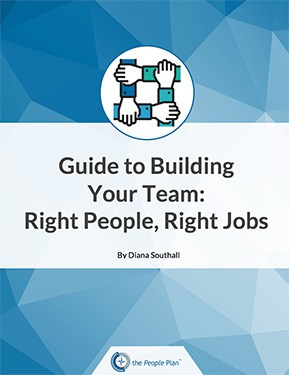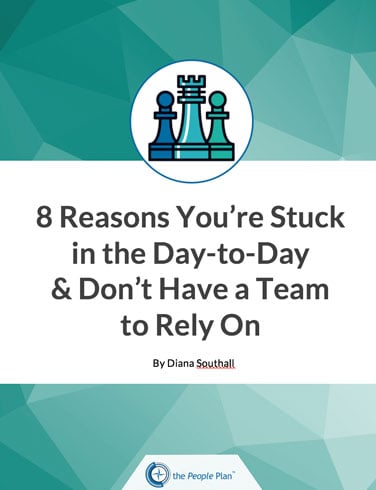
by thepeopleplan | Jul 13, 2012 | Uncategorized
Last month our blog discussed what is Culture and why does it matter.
Essentially Culture is the attitudes, belief sets, values, written ground rules, and unwritten ground rules that set the tone of the organization and the guidelines by which employees make decisions.
If you want to use the powerful force of Culture as a motivational tool, you have to identify the culture you want and that will support the organizational goals. The Alexander Group has identified what they call the “management compass” based on what an organization focuses on (see list below- basic types of cultures).
Steps to align Culture with Goals
- Decide what type of culture you have now and want — see short list below (basic types of cultures) to find yours
- Is there a gap between current and desired Culture? Do you need Culture change?
- Identify the organizational strategy and short-term goals
- Communicate Values and performance that will support the Culture and achieve the goals/ results
- Train and coach immediate supervisors to recognize behaviors that demonstrate desired performance, and to give corrective feedback when behaviors show a lack of commitment to the values or goals
- Reward those employees (financial and non-financial) that show a commitment to the values or goals
- Council employees who are not demonstrating the expected Values and/or Actions and explain consequences, then act on those consequences if there is not adequate improvement
- Continue steps 4-7 as long as the strategy and goals are similar (if the strategy changes dramatically and requires a new Culture (think Kodak) then go back to #1 to identify new desired Culture)
Basic types of cultures (what is valued):
- Results oriented
- Focus on shareholders
- Employee oriented
- Individualistic
- Customer focused
- The organization as an Institution
- Great at execution (achieving goals)
Image courtesy of David Castillo Dominici at FreeDigitalPhotos.net

by thepeopleplan | Jul 10, 2012 | Uncategorized
I have yet to meet a supervisor, manager, executive or business owner who tells me that their organization has it “easy “in the current economic climate.
What I do hear is that they have to:
- Adapt to a changing competitive environment
- Do more with less
- Consider how to keep profits with rising costs and lowering prices
- Respond faster to customer requests and orders
All of these business requirements trickle down to employees.
Surveys show that employees feel they are:
- expected to do the impossible
- overwhelmed with too much work
- 40% are stressed to the point of feeling “burned out”
- 64% are physically exhausted when they get home from work
This is not a recipe for creative products or world-class customer service.
If employees do not have the resources to do their jobs (time, information, approval, authority, the rest of the organization delivering on promises) they will become frustrated, lose engagement and then individual and company performance will decline.
A key element to improving your working conditions and employee work load is to collect employee suggestions and issues and then systematically address with process improvement.
Read more in Verne Harnish/ Gazelle article Dehassling your company
Image courtesy of David Castillo Dominici at FreeDigitalPhotos.net

by thepeopleplan | Jun 21, 2012 | Uncategorized
Henry Ford said, “The only thing worse than training your employees and having them leave is not training them and having them stay.”
When employees feel they are acquiring new skills, have development opportunities and a clear career path they are more likely to be engaged with their job and stay with the organization.
It is not enough to offer training programs, it is critical to communicate and provide appropriate and engaging learning and development opportunities to your employees (especially to Gen Y employees). If you identify high potential employees and systematically increase and broaden their skills, you will also do more to retain rising stars in your organization.
There are two types of development Job specific or in current knowledge area (depth) and new skills (breadth). Both are important but there are many reasons to expand the skill set of your employees to add new potential strengths:
- You don’t know what they might turn out to be great at, or interested in, beyond what their current role involves.
- You need to build a broader talent pool, a network of possible replacements that could be tapped as business needs change (or as key people leave the organization).
- You need to develop a strong learning culture, one where employees naturally seek out new skills and competencies with less explicit prodding from you or your HR partners.
- You want your people engaged and interested in the work and research shows that new, challenging assignments are one of the best ways to accomplish this.
(source: Taleo Research White Paper -Learning and Development: The New Business of Business Leaders)
Large employees are continuing to use training and career opportunities as part of their Total Rewards portfolio. A recent Aon Hewitt Total Rewards survey reports that over half of organizations focus on Career development (61%) and training/ learning (56%) to increase engagement and retention.
Image courtesy of PinkBlue at FreeDigitalPhotos.net

by thepeopleplan | May 17, 2012 | Uncategorized
Compensation (base pay) is the most expensive reward you offer employees yet it is not very impactful in retaining or motivating employees. (It is in attracting new employees and a factor in their decision to take your job offer). Your pay practices can also become a major de-motivator if employees feel that they are not paid fairly compared to other workers.
The problem:
- Surveys find that about half of employees do not know how their compensation is determined.
- Many organizations say that they “pay for performance” yet a top performer might receive a 4% raise instead of a 3% raise—not exactly providing a meaningful difference to reward extra effort.
- Incentive plans often create unintended consequences of discouraging teamwork, encouraging behaviors that do not serve the customer, or become an expected entitlement and not a motivator or perceived reward for great performance.
The solution:
Many theories of motivation and business authors (Dan Pink, Brad Ham) share the philosophy of Total Rewards—provide fair and market competitive wages and then provide the other Rewards to engage your staff. (See our series on 13 Total Rewards in the Rewards category of our blog).
As for incentives (variable pay), these plans need to be carefully designed and communicated so that they align individual effort with business goals and then share a reasonable part of the gain. Give employees an upside when they and the organization does well and you protect your bottom line for the lean times.
Contact us to learn more about the WNY Compensation & Benefits Survey to benchmark your organization to others in the region.
Image courtesy of Stuart Miles at FreeDigitalPhotos.net

by thepeopleplan | Apr 26, 2012 | Uncategorized
If pay were the only reason employees worked, only the highest-paying employer would have staff and no one would work at not for profits!
Employees look at more than just compensation when they consider a job offer or when they consider leaving your organization—they look at “Total Rewards”.
These are all the rewards elements of a job that impact an employee’s satisfaction with the job, and the key to find, keep and motivate more Right People on your staff.
The “Best Places to Work” are rated this way because they provide a Total Rewards package that employees find favorable.
A flexible and customized Total Rewards package allows your organization to attract, retain and reward top performers – which provides a competitive advantage for your organization.
Don’t just take our word for it!
According to Aon Hewitt’s global Best Employer report “research reveals how organizations differentiate and achieve a competitive advantage through their people. The benefits of being a Best Employer are well documented, from improved retention to increased productivity. Best Employers are distinguished by high levels of employee engagement, which results in lower turnover, larger talent pools, and better financial performance.
Organizations with high levels of engagement to outperform the stock market index with returns 22% higher than average; companies with low engagement had returns 28% lower than average.”
Link to full Aon Hewitt report on Employee Engagement
Consider more than your base pay: 
Employers often look at compensation as the main (and most expensive) element to achieve employee satisfaction—but there is a multitude of research that the quality of manager- employee interaction is far more important to employee satisfaction and retention (among 11 other rewards).
For example, according to a recent study by the Total Rewards organization World at Work, recent college graduates rate pay as #5 in importance, behind opportunity, flexible work hours and a friendly work environment.
How do you find out if employees are satisfied with your Rewards—you ask them! The best way to measure changes in employee satisfaction and engagement is to conduct an annual Total Rewards survey. If you have different locations or shifts the results can be summarized to if there are any meaningful differences among groups of workers (there usually are). This allows you to provide a flexible Total Rewards package that appeals to different types of workers with different interests.
Contact us to receive a free article on the Total Rewards model, and process to identify employee needs and develop a custom and flexible Total Reward program for your unique organization.
Image courtesy of scottchan at FreeDigitalPhotos.net









